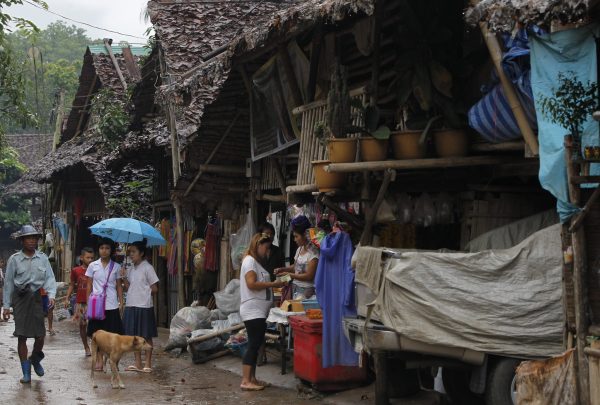Following the signing of the Nationwide Ceasefire Agreement and the electoral victory of the National League for Democracy in 2015, there has been a concerted push for the repatriation of refugees back to Myanmar. Traditionally, repatriation was to a third country — mostly to the United States, Canada, Australia and Europe. But now, as these countries have closed their resettlement programs, donor agencies are pushing for large-scale resettlement in Myanmar. While this would remove one of the most visible legacies of decades of ethnic conflict, it is not this simple.
The push for repatriation coincides with a shift by donors and aid agencies from working along the Thailand–Myanmar border to working inside Myanmar. For decades, long-time donors and aid agencies have worked to support and sustain refugee camps along the border. But many are now redirecting their funding to projects inside the country and increasingly favouring a development model of aid as opposed to one of refuge and emergency response.
But this shift seems to be misguided. The needs of those living in the camps has not dissipated.
More than 100,000 refugees (both documented and undocumented) are estimated to be living in nine camps along the border. One of the major humanitarian aid providers, The Border Consortium, has failed to secure full funding for its programs. Between 2012 and 2016 The Border Consortium’s funding reduced by almost 50 per cent, which has meant cuts to food supplies — a worrying trend, since many camps are too crowded to support arable land for personal cultivation. Inhabitants have been given a choice: repatriate or face food and other aid shortages.
Not just food aid is being cut. Mae Tao Clinic, which regularly receives 150 outpatients a day, has been providing lifesaving medical treatment to refugees along both sides of the border and has recently had to reduce operating costs by 20 per cent. In 2018, the United States Agency for International Development — the clinic’s major donor — will only support humanitarian groups working inside Myanmar.
The cessation of funding flies in the face of reports coming from Myanmar, particularly relating to the issues and problems in the places to which these refugees are supposed to be relocated.
While many stakeholders feel conditions are ripe for return, reports from the ground in Kayin State and in Shan State suggest otherwise. Clashes between the Tatmadaw and EAOs are ongoing and the much-embittered ceasefire is dragging on. Recent Tatmadaw atrocities in Rakhine State have also served as a reminder of the brutality of the army’s tactics. Similarly, these areas are littered with landmines, which threatens the safety of returnees.
Other social and livelihood problems include a lack of employment opportunities, a risk of gender-based sexual violence and a lack of security that suggests the likelihood of further forced displacement. The rampant drug trade creates a wide array of negative social effects that have spilled into villages along the border including drug addiction, health problems and drug-related violence. Arbitrary taxation and land seizures for development projects are common. In short, there are relatively few pull factors attracting people to return across the border.
It is clear why ethnic minority populations are not as excited about repatriation as their foreign aid donors.
Many complain that they lack access to information on the repatriation process. Some of the initial returnees from the Nu Po camp in Thailand have reported being under-supported and have complained of a lack of jobs. More worryingly, these returnees each received a two-month temporary identification card; these are now long past expiry. Adding to the existing vulnerability of returnees, undocumented people are at much higher risk of falling victim to human trafficking.
On the other hand, individuals who remain inside the camp are left with few choices. They are dependent on external aid and those who are not registered with the UNHCR are ineligible for resettlement. Many would like to stay in Thailand, but this looks increasingly unlikely given how little support there is for granting Thai citizenship to refugees on such a large scale.
Donors should consider continuing to support the work of civil society organisations and community-based organisations on the border until conditions improve in Myanmar. These organisations require funding to continue to provide education, public health and basic social services that otherwise would be unavailable. Wholesale integration of these refugee communities into Thailand is unrealistic. Instead, donors should support them until the conditions for repatriation have improved.
Maximillian Mørch is a freelance journalist and researcher based on the Thailand–Myanmar border.

